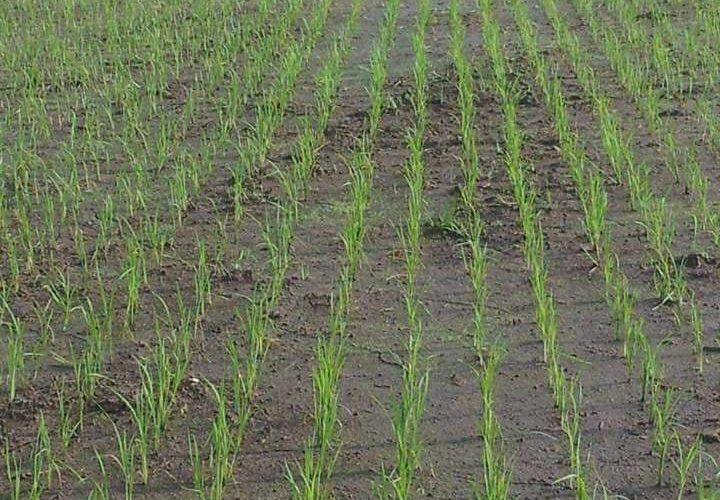
The rural farmers in Cambodia needed irrigation systems for rice and vegetable production improvement in a year-round, thus to encourage more youth in agriculture!
Around 47 years ago, Cambodia was ruled by the genocide regime “Khmer Rouge” 1975 – 1979, there were several community ponds and canals were constructed by using human labor for agricultural purpose. One of those ponds is located at the Svay Chrum Commune, Svay Chrum district, Svay Rieng. Throughout the years, especially the community pond is not well managed and neglected. Nowadays, some of hose neglected ponds have been used and own by a family farmer, some owned by the community with an average depth of approximately 1 meter. Water collected in the pond, during the wet season, is used by farmers for the cultivation of rice in the dry season. As the pond is located in a depression it has the potential to store more water for agriculture improvement purpose. CFAP would like to re-construct the pond and canals to increase the rice and vegetable cultivation areas in a year-round. In 2015 a group of students come from the Hogeschool, a university of applied science HVL, A.R. Kok, H.G.M. Wismans and
M. van der Weert made a study research in collaboration with CFAP in Cambodia. The researched design was recommended the irrigated area with water use estimation and economy of the community pond.
The original dimensions of the design consist around 88 meter length, 48 meter width, 4 meter depth and a 2:1 slope. The total storage capacity of the community pond was 12,885 cubic meter. The design aimed at harvesting rainfall to improve the rice and vegetable cultivation, especially in dry season (November to April). According to the previous study, there was assumed that the groundwater level was below the pond. As a result, no groundwater inflow occurs into the pond. Surface water inflow to the pond will mainly consist of excess rainwater during the wet season. Since the total drainage from the 25ha rice area in the wet season is much larger than the storage capacity of the pond, the excess water will overflow the pond and flow through a nearby drain. It is assumed that all water collected in the community pond will be beneficially used for rice irrigation. The potential irrigation area, regarding the amount of water available in the report discussed design, is approximately 5.15 ha.
Based on CFAP’s previous experience, the construction of the pond is around 1.50 US Dollar per m3. The profit from rice cultivation during the dry season with water from the re-constructed pond is approximately 5,417,800 Riel. When the new pond is only used for the cultivation of rice, the project is not profitable. When 100% of the profit will be refunded each year, it will take 10 years to refund the construction. The refunding time can either be decreased by increasing the depth of the pond or generate additional income (raise fish and plants in the pond). Further CFAP aimed to design a canal for other areas where they are potential for rice and vegetable production that can enable farmers to do farming in a year-round. In this regard, CFAP is planning to have further studies on the household pond, community pond and canal in other areas to improve the agroecological practices amongst farmer members at target provinces in Cambodia where they are potential for agriculture.
In 2022, CFAP learned that smallholders faced problems to do farming in a year-round to expand farming activities to improve agricultural production while most farmers are disrupted by the Covid-19 pandemic, thus to take advantage to engage local produces to markets. To have overcame the challenges of this constraint, therefore the rehabilitation of the irrigation systems would help sustained agriculture, sustained food systems, biodiversity protection, protection soil from degradation and also reforestation in the agroecological and renewable systems in anew way, so the rural livelihoods would have improved better. According to CFAP’s experiences, therefore external funding is needed while farmers, especially young and women farmers are not capable to do on irrigation system as they live with poor conditions and fragile economic living conditions as most of them lost jobs in the cities and back to the village.